The New Republic – Oxalis x Brooklyn Museum
Prospect Heights
Close
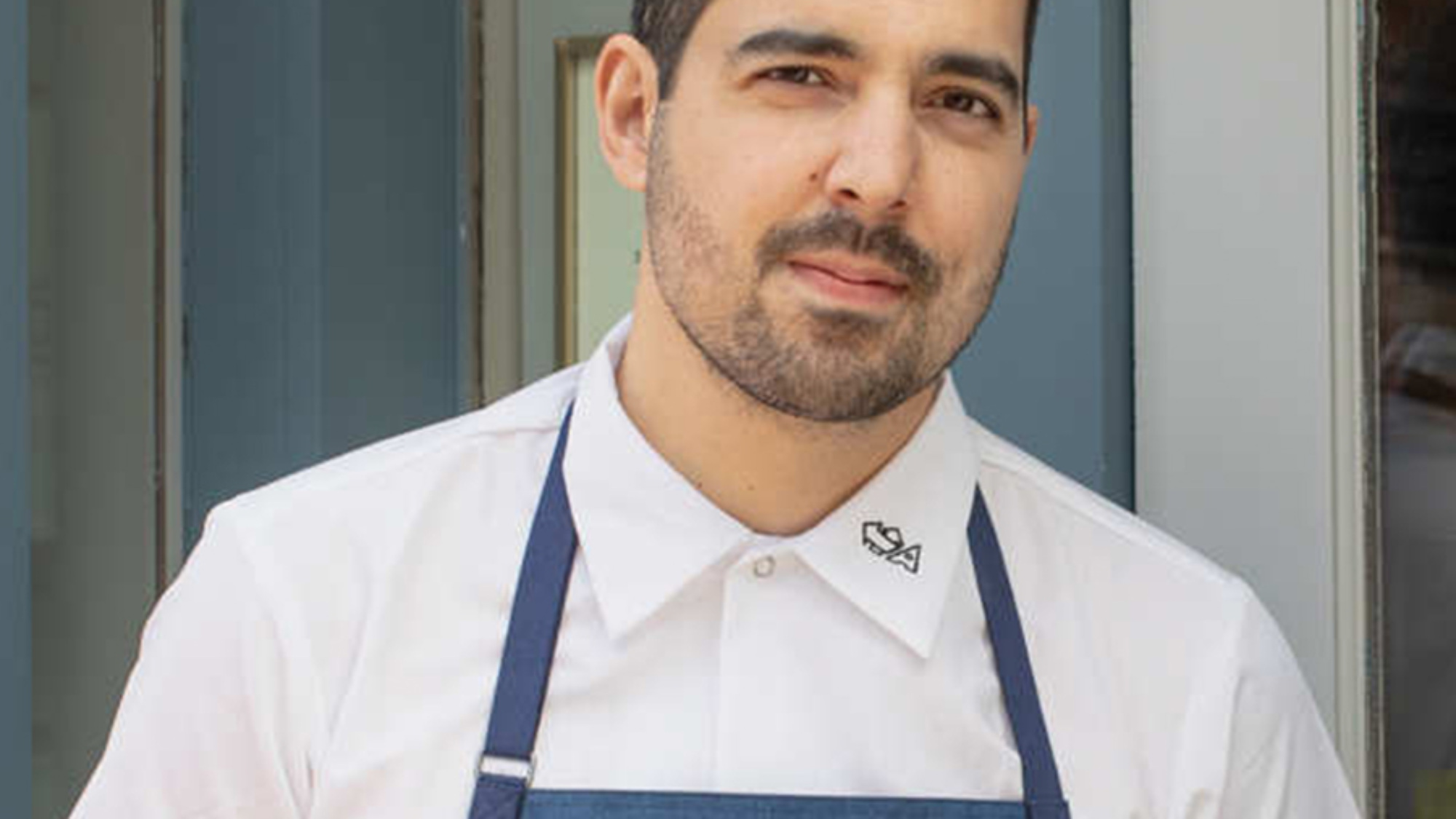
Nico Russell, co-owner and executive chef at Oxalis in Prospect Heights, Brooklyn, needs no help with inspiration. At his French-inspired, Michelin-starred restaurant, he gives new depth to what one might expect from a small neighborhood bistro, where the “carte blanche” tasting menu on a recent night boasted smoked trout bathed in apple jus, and celery root shaved pasta-thin, nestled like a blossom in a bed of ricotta puffs and marjoram. But a big boost of creativity landed at the Oxalis doorstep when the Brooklyn Museum, a few minutes’ walk away, asked Russell to host The New Republic, a one-night-only ticketed dinner on Jan. 28 that is inspired by its exhibit Jacques-Louis David Meets Kehinde Wiley, which opened on Jan. 24.
Food and art have always gone together, if only to stir debate as to whether one can be the other: Is food really art? Can art be dinner? Laval Bryant, the Brooklyn Museum’s senior manager of tourism and visitor experience, spearheaded the restaurant collaboration to provide different ways of accessing art. “I want to invoke my senses and get out into the community and understand what’s happening around me,” she says. “In doing more partnerships like this, you broaden people’s way of interpreting art.”
With that goal, the dinner-exhibit pairing sets aside the meta-debate to instead focus on a more compelling inquiry: What if we used food to deepen our understanding of art? What if art allowed us the space to play with, or even interrogate, our food?
As a kind of answer, this Russell-Wiley-David experiment marks an exciting moment for the intersection of both creative pursuits.

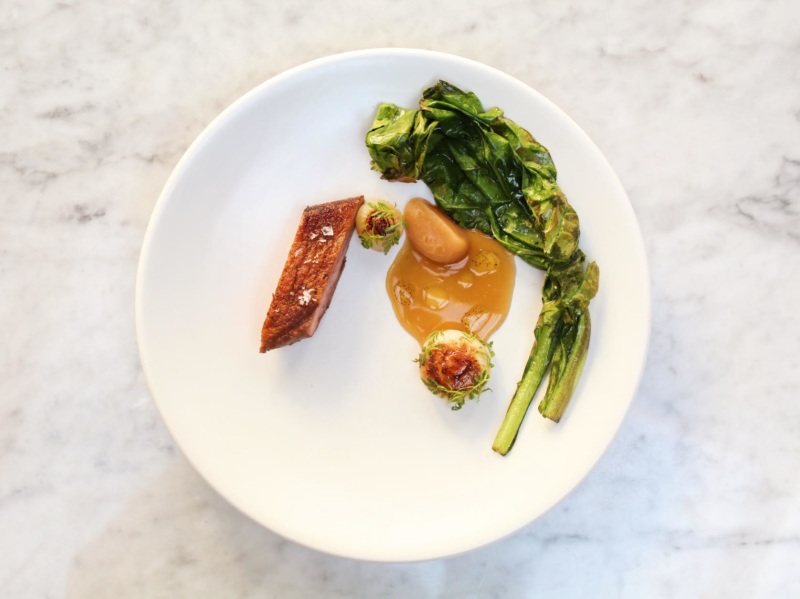
Russell is trained in classic French technique with stints at Daniel in New York and Mirazur in Menton, France. At Oxalis, he uses cooking traditions from around the world, occasionally drawing from his Mexican and Filipino heritage and an upbringing in San Jose, Calif., where there is a diverse Asian population.
“We market ourselves as a French restaurant, because people know that I’ve worked in French restaurants, and that’s a core classic technique we use here. But I think this space is more for us to push ourselves creatively,” Russell says. “We pull techniques from all over the world because those are just the best techniques. The way they preserve limes in North Africa, or kimchi in Korea, or how they age fish in Japan. These cultures have figured out the best way to do something. From a food perspective, it’d be dumb to not take what these cultures have perfected.”
The New York-based artist Kehinde Wiley is celebrated for his daring, vibrant naturalistic works that often depict young, black men in regal, imposing postures painted in classical European style. He has won global acclaim for his revisioning of portraiture and for challenging the Eurocentric art history canon by casting everyday youth, usually in streetwear and hip-hop style accoutrements, with the same glory and bombast offered to white men figures of centuries past. In 2017, he was commissioned to paint former President Barack Obama for the Smithsonian National Portrait Gallery. His 2015 show at the Brooklyn Museum was titled A New Republic, and informs the dinner name.
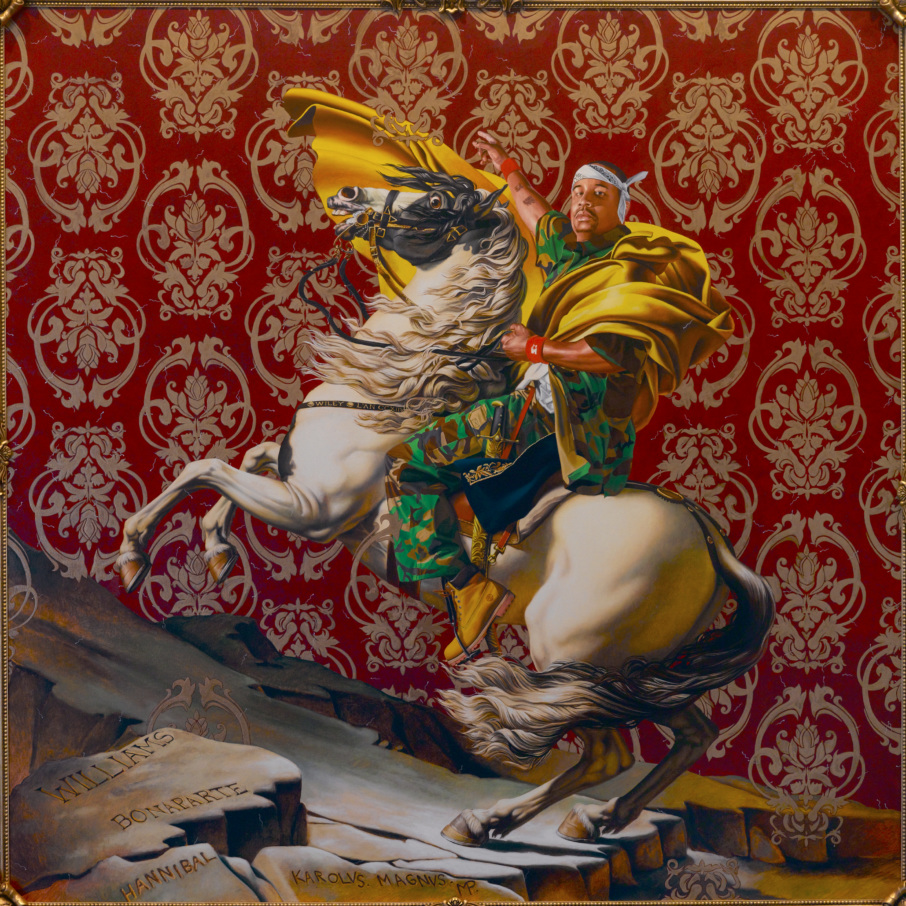
A focal point of the David Meets Wiley exhibit is one of Wiley’s most celebrated works, the 2005 painting “Napoleon Leading the Army over the Alps,” which has been on long-term loan to the Brooklyn Museum and was on prominent display in the lobby. In it, Wiley paints a black man on horseback with a bandana around his forehead, adorned in camouflage and a gold-hued garment. The painting is now displayed in a gallery across from the Jacques-Louis David 1801 painting that inspired it, “Bonaparte Crossing the Alps,” in which the French conqueror is stoically depicted in formal military gear on horseback, raring to lead his army through the snowy mountains. The David painting, on loan from the Château de Malmaison (where Napoleon once lived and briefly headquartered the French government), is debuting in New York for the first time. At the Brooklyn Museum, curators Eugenie Tsai and Lisa Small hope viewers will come away with a sense of the power that images have to reshape stories.
“We live in an age that celebrates celebrity and is highly conscious of branding and the shaping of one’s image,” Tsai says. “This strategy is not new; it’s gone on forever. Napoleon crossed the Alps on a mule — a mule! — but when you look at David’s painting, he’s not on a mule.”
She continues: “The people with power are the ones who set the rules, who get to speak, who can be depicted.”
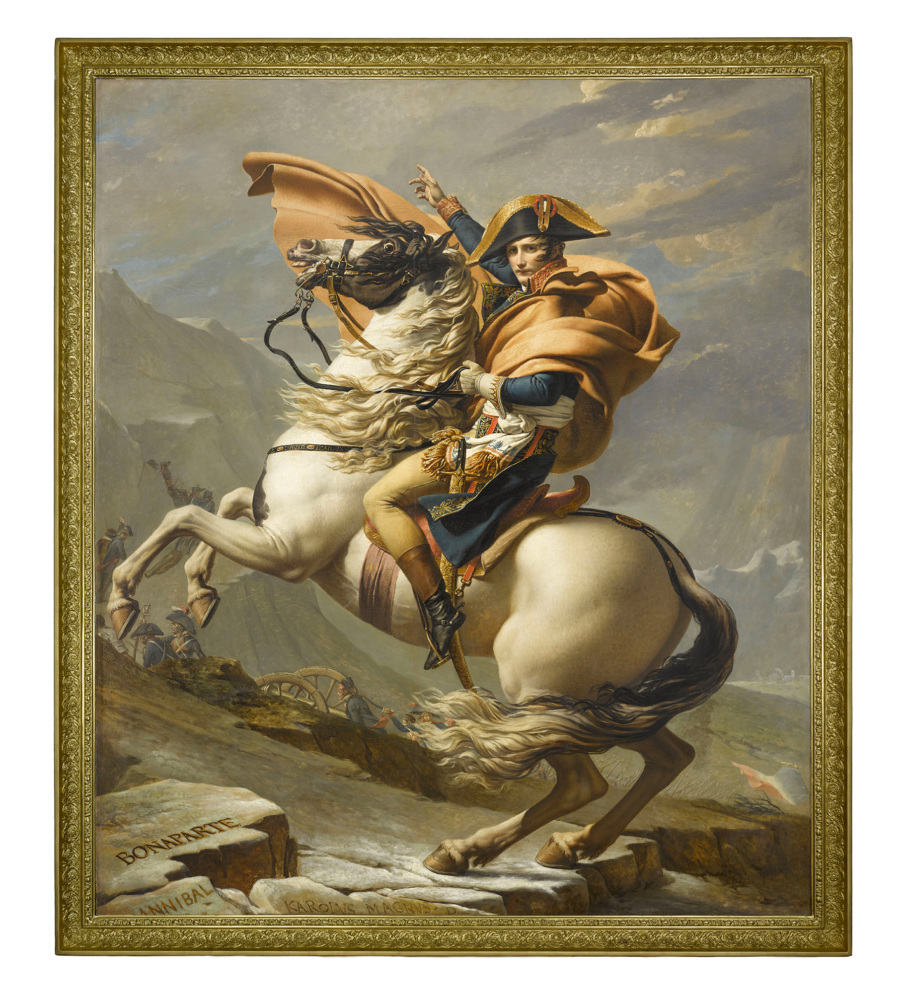
The marquee paintings will be shown with other pieces, including a small replication of Wiley’s “Rumors of War” sculpture (the original stands 27 feet tall at the Virginia Museum of Fine Arts and was once displayed in Times Square). It challenges the storytelling and mythmaking inherent in American Confederate monuments. Other pieces from the Brooklyn Museum’s collection include drawings and political caricatures that reflect on Napoleonic propaganda, another bronze bust sculpture by Wiley, and video commentary of Wiley’s first in-person sighting of the David painting while at the Château de Malmaison.
For curator Small, these juxtapositions allow viewers to consider that appropriation isn’t new. “Wiley and David are endlessly reexamining and repurposing tropes from their own past. Just as Wiley has found this remarkable and powerful way to retell these stories and insert different people and give different people power within narratives, an artist like David was working at a time and in a tradition where he had a set of images that he would draw upon for his own compositional strategy.”
These big ideas are grand fodder for Russell and the Oxalis team, who are planning a dining event that will take viewers who have just seen the exhibit and move them throughout the restaurant space enjoying various bites and dishes. Russell says the menu will take inspiration not just from the visual composition of the Wiley and David paintings, but also of the ability for artists to forge new traditions from the past. That is, to cast new ways of seeing on how we eat — and to what and to whom we attribute food traditions.
“We have head cheese as a bar snack,” Russell says. For many, head cheese is a technique that many think of as French. “But I grew up eating adobo my whole life,” Russell goes on. “To me this doesn’t taste like when I lived in France. It tastes like growing up in northern California.” In other words, the preservation of meat is not a French invention and it doesn’t nurture useful conversations around dining to perpetuate that notion.
Like Wiley, Russell couples a precise expertise in Euro-classic history with his reading of the modern landscape to forge a subversion of that history. Wiley’s art exists in a broad multicultural canon of those who challenge the white-dominant narratives reflected in Western art history — in the image-making that tells our stories.
Now more than ever, American fine dining — plus the media that covers it — is being pushed to confront how those who write the fine dining histories have been predominantly white and often lacking the personal experiences in cuisines that have been described as “ethnic.” This cultural myopia can render invisible the nuances of rich, worldly cuisines that still get the short shrift.
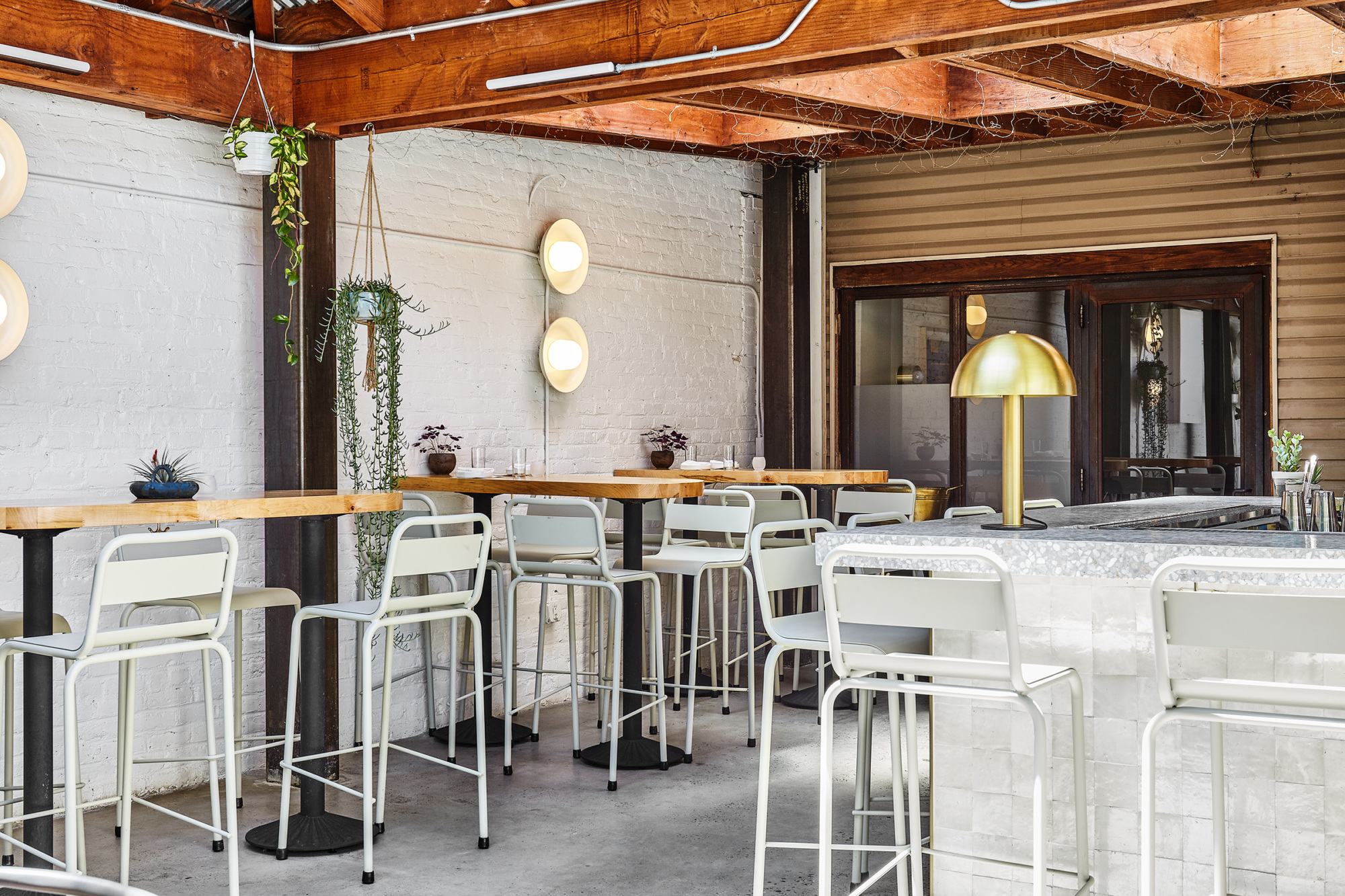
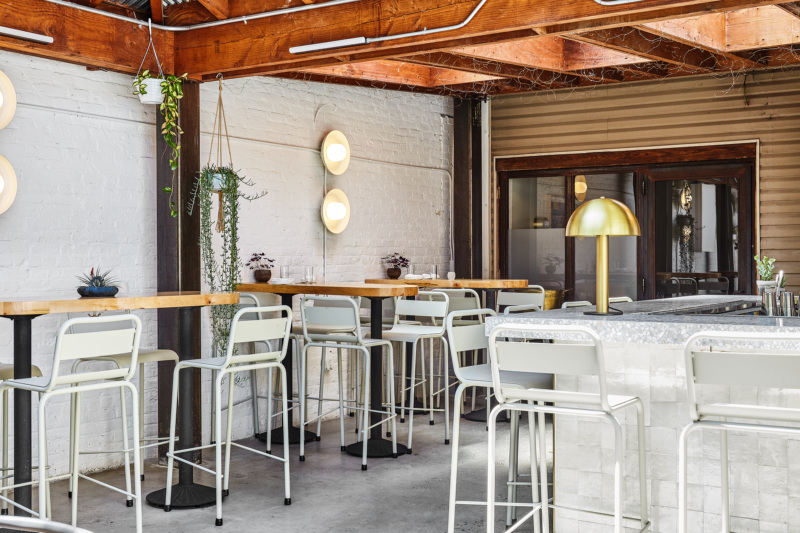
If you live in New York and have never enjoyed pounded yam, that is not because of a dearth of West African restaurants that serve it. “Indian food” is a misnomer for hundreds of locally driven foodways. Baja cooking is distinct from what happens in Oaxacan kitchens. So-called Nigerian dishes are in fact reflective of contributions of Edo, Yoruba, Hausa, and Igbo cooks, among countless more. African American cooking and culinary traditions, long blithely truncated as only soul food, has always varied by region, inspired by seasonality, diverse agriculture and local seafood and game. Those who write about French cooking should also know that Marseille is a major seat of the Arab diaspora, that banh mi in Paris is just as beloved as a jambon beurre, and that a French-speaking diner might crave tagine on a cold night even more than coq au vin.
When Russell was living in France, his favorite meal came at a Tunisian-French restaurateur’s business, where he’d order a plate of grilled lamb with couscous, to which he’d generously add harissa, a spicy chile pepper paste that can include spices like coriander and caraway. He befriended the fellow chef and on days off, the two would share mint tea and long conversations. That’s not the scene most Americans envision in a small idyllic village outside of Nice. (These days, Russell makes a harissa paste that pops up on the Oxalis menu now and then. “That’s France to me,” he says.)
Back at Oxalis, one of the dishes Russell intends to make for the Wiley event is salt-roasted beets with glazed onions and spicy blossoms of nasturtium and radish. He hopes the bright reds and yellows in the dish will remind attendees of the tapestry-like background in Wiley’s Napoleon. A dollop of cultured cream in the middle will mellow the flavors, lending a smooth transition to dishes that follow.
Jacques-Louis David Meets Kehinde Wiley will be a new conversation for many, as will the aptly named New Republic Oxalis dinner. But what feels just and thrilling on its own is the notion that this version of history is one where an American chef of Mexican and Filipino heritage and a Los Angeles-raised black man of Nigerian background get to establish the baseline narrative.
Osayi Endolyn is a James Beard Award-winning writer whose work often reflects on food, dining spaces and cultural identity.
The New Republic – Oxalis x Brooklyn Museum: Tuesday, Jan. 28. Tickets are $200 per person and include a tour of Brooklyn Museum’s Jacques-Louis David Meets Kehinde Wiley Exhibit by Jessica Murphy, manager of visitor engagement, followed by an interactive dinner with Oxalis. The dinner features six courses and beverages paired for each course. The price of each ticket also includes tax and tip. The evening will commence at 6pm in the lobby of the Brooklyn Museum (200 Eastern Parkway, Brooklyn, NY 11238).

Stephen Satterfield's Corner Table